Carl E. Olson's Blog, page 302
July 17, 2011
"O Christ our God, You are above all praise..."
... for You established our Fathers as lights to all the earth.
You led us to the true faith through them.
O most Bountiful Lord, glory be to You.
Glory be to the Father and to the Son and to the Holy Spirit. Now and ever and forever, Amen!
The preaching of the Apostles
and the decisions of the Fathers
have established the true faith of the Church
which she wears as the garment of truth
fashioned from the theology on high.
She justly governs and glorifies the great mystery of worship.
— The Troparian and Kontakion from the Divine Liturgy of St. John Chrysostom on this, the Sunday of the Fathers of the First Six Ecumenical Councils
That wonderful phrase, "fashioned from the theology on high", might sound a bit odd to some folks. If so, this paragraph of the Catechism of the Catholic Church helpfully unpacks it a little bit:
The Fathers of the Church distinguish between theology (theologia) and economy (oikonomia). "Theology" refers to the mystery of God's inmost life within the Blessed Trinity and "economy" to all the works by which God reveals himself and communicates his life. Through the oikonomia the theologia is revealed to us; but conversely, the theologia illuminates the whole oikonomia. God's works reveal who he is in himself; the mystery of his inmost being enlightens our understanding of all his works. So it is, analogously, among human persons. A person discloses himself in his actions, and the better we know a person, the better we understand his actions. (par. 236)
Here is an older essay with thoughts along similar lines:
July 16, 2011
Parables are the coded letters left by the Divine Lover
A Scriptural Reflection on the Readings for Sunday, July 17, 2011, the Sixteenth Sunday in Ordinary Time | Carl E. Olson
Readings:
• Wis 12:13, 16-19
• Psa 86:5-6, 9-10, 15-16
• Rom 8:26-27
• Matt 13:24-43
What is the Kingdom of God? How does it come about? And how will it grow?
These are some of the questions addressed in the parables of Jesus, including the seven parables found in Matthew 13. As we saw last week, these parables are not simply stories with a moral, nor are they theological tracts or even pithy catechetical lessons. Parables are not, writes Erasmo Leiva-Merikakis in the second volume of Fire of Mercy, Heart of the World (Ignatius Press, 2003), "a test of human intelligence that functions like riddles. Rather they are verbal strategies of grace that test the willingness of the human heart to surrender to, and be enfolded by, the always surprising generosity of Wisdom."
Leiva-Merikakis describes a parable, strikingly, as "a coded letter left by a Lover" (p 192). He points out that the original Greek renditions of the parables are imbued with a beautiful musicality, adding even more meaning to Jesus' exhortation: "He who has ears, let him hear" (Mt 13:9). God's love for mankind is such that the eternal Word uses words of beauty to redeem our souls and transform our hearts.
Today's Gospel reading contains three of the seven parables: the parables of the weeds among the wheat, the mustard seed, and the yeast (or leaven). Like the parable of the sower and seeds heard last week, all three express something about the growth of the Kingdom and how God's word brings about that mysterious—and often unseen—growth.
Like the parable of the sower and the seeds, the parable of the weeds among the wheat has an agricultural setting. However, the parable is unique to Matthew's Gospel and does not appear in the other Gospels. The focus is less on the response of the soil to the sower's seeds and more on the mystery of evil and how it grows alongside what the Son of Man has planted in the field of the world. In his explanation of the parable to the disciples, Jesus draws a stark contrast between the children of the kingdom and the children of the evil one. Those who hear the word of God and reject it are the children of Satan. Having been offered light, they choose darkness (cf., Jn 1:9-11; 3:19-20).
But, as Saint Augustine noted, what is currently wheat can become a weed, and what is a weed can still become wheat "and no one knows what they will be tomorrow." It is right to lament the sins committed by sons and daughters of the Church. But we shouldn't be blind to our own weaknesses, nor to the ravenous appetite of the devil, who "is prowling around like a roaring lion looking for someone to devour" (1 Pet 5:8). Mindful of our failings, as the Apostle Paul exhorts the Romans in today's epistle, we must trust in the Holy Spirit, who "comes to the aid of our weakness, for we do not know how to pray as we ought."
The parable of the mustard seed, although short, is memorable in its imagery, especially in the comparison between the largeness of the bush (growing to ten feet in height) and the smallness of the seed. Its central meaning is that the works of God often begin in small ways and are usually ignored or missed by the world. The temptation for the children of the Kingdom is to become impatient, forgetting that this tree has now been growing for thousands of years, and will continue to grow until the end of time.
Even shorter is the parable of the yeast, or leaven. From what seems to be of little consequence comes a super abundance, a theme echoing the reality of the Incarnation and the stunning truth of the empty tomb. It is Christ, the lover of mankind, who is the leaven. And it is through his death and Resurrection and by his Body and Blood that we are leavened—transformed and transferred into the always growing kingdom of the Son (Col 1:13).
(This "Opening the Word" column originally appeared in the July 20, 2008, issue of Our Sunday Visitor newspaper.)
• What are parables and why did Jesus use them? (July 10, 2011)
July 15, 2011
Save 20% off books by Michael O'Brien

Offer ends Tuesday, July 19th, 2011 at 12:00 midnight EST.
These prices are available online only through Ignatius.com
Michael O'Brien is an icon artist and painter. But what he is probably better known for are his books. He has authored several books including the best selling novel Father Elijah as well as Strangers and Sojourners, Sophia House, Island of the World and the most recent publication Theophilos. In honor of this great artist and author, Ignatius Press is offering 20% off the selected titles below.
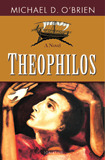 Theophilos
Theophilos
A Novel
St. Luke addressed his Gospel and Acts to a man named Theophilos: but who was he? In O'Brien's new tale he is Luke's skeptical adoptive father, concerned by this "Christos" in Luke's writings and about his newly zealous son's fate. He embarks on a search to bring Luke home—and runs into the unexpected dimensions of his very self. Also available as an e-book or downloadable audio.
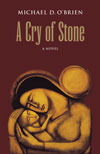 A Cry of Stone
A Cry of Stone
In this fifth novel in his series, Children of the Last Days, Michael O'Brien explores the true meaning of poverty of spirit. Loosely based on the real lives of a number of native North Americans, A Cry of Stone is the fictional account of the life of a native artist, Rose Wâbos. Abandoned as an infant, Rose is raised by her grandmother, Oldmary Wâbos, in the remotest regions of the northern Ontario wilderness. The story covers a period from 1940 to 1973, chronicling Rose's growth to womanhood, her discovery of art, her moving out into the world of cities and sophisticated cultural circles. Above all it is the story of a soul who is granted little of human strengths and resources, yet who strives to love in all circumstances. As she searches for the ultimate meaning of her life, she changes the lives of many people whom she meets along the way. Also available as an e-book or downloadable audio.
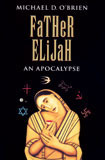 Father Elijah
Father Elijah
An Apocalypse
Michael O'Brien presents a thrilling apocalyptic novel about the condition of the Roman Catholic Church at the end of time. It explores the state of the modern world, and the strengths and weaknesses of the contemporary religious scene, by taking his central character, Father Elijah Schäfer, a Carmelite priest, on a secret mission for the Vatican which embroils him in a series of crises and subterfuges affecting the ultimate destiny of the Church.
Also available as an e-book or downloadable audio.
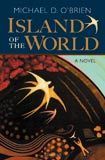 Island of the World
Island of the World
A Novel
Island of the World is the story of a child born in 1933 into the turbulent world of the Balkans and tracing his life into the third millennium. The central character is Josip Lasta, the son of an impoverished school teacher in a remote village high in the mountains of the Bosnian interior. As the novel begins, World War II is underway and the entire region of Yugoslavia is torn by conflicting factions: German and Italian occupying armies, and the rebel forces that resist them—the fascist Ustashe, Serb nationalist Chetniks, and Communist Partisans. As events gather momentum, hell breaks loose, and the young and the innocent are caught in the path of great evils. Their only remaining strength is their religious faith and their families. Also available as an e-book.
Sophia House
Sophia House is set in Warsaw during the Nazi occupation. Pawel Tarnowski, a bookseller, gives refuge to David Schäfer, a Jewish youth who has escaped from the ghetto, and hides him in the attic of the book shop. Throughout the winter of 1942-43, haunted by the looming threat of discovery, they discuss good and evil, sin and redemption, literature and philosophy, and their respective religious views of reality. Decades later, David becomes a convert to Catholicism, is the Carmelite priest Fr. Elijah Schäfer called by the Pope to confront the Anti-christ in Michael O'Brien's best-selling novel, Father Elijah: an Apocalypse. Also available as an e-book.
The Plague Journal
A Novel
Plague Journal is Michael O'Brien's fourth novel in the Children of the Last Days series. The central character is Nathaniel Delaney, the editor of a small-town newspaper, who is about to face the greatest crisis of his life. As the novel begins, ominous events are taking place throughout North America, but little of it surfaces before the public eye. Set in the not-too-distant future, the story describes a nation that is quietly shifting from a democratic form of government to a form of totalitarianism. Delaney is one of the few voices left in the media who is willing to speak the whole truth about what is happening, and as a result the full force of the government is brought against him. Also available as an e-book or downloadable audio.
Strangers and Sojourners
A Novel
An epic novel set in the rugged interior of British Columbia, the first volume of a trilogy which traces the lives of four generations of a family of exiles. Beginning in 1900, and concluding with the climactic events leading up to the Millennium, the series follows Anne and Stephen Delaney and their descendants as they live through the tumultuous events of this century. Also available as an e-book or downloadable audio.
Eclipse of the Sun
A Novel
In this fast-paced, reflective novel, (the second in a trilogy following Strangers and Sojourners) Michael O'Brien presents the dramatic tale of a family that finds itself in the path of a totalitarian government. Set in the near future, the story describes the rise of a police state in North America in which every level of society is infected with propaganda, confusion and disinformation. Few people are equipped to recognize what is happening because the culture of the Western world has been deformed by a widespread undermining of moral absolutes. Also available as an e-book or downloadable audio.
A Landscape with Dragons
The Battle for Your Child's Mind
In his book A Landscape with Dragons, Harry Potter critic Michael O'Brien examines contemporary children's literature and finds it spiritually and morally wanting. His analysis, written before the rise of the popular Potter books and films, anticipates many of the problems Harry Potter critics point to. A Landscape with Dragons is a controversial, yet thoughtful study of what millions of young people are reading and the possible impact such reading may have on them. Also available as an e-book.
A little bit on the family tree of the new Youth Catechism
I arrived home a few hours ago after a rather long and semi-exhausting day and am now trying to catch up on several hundred e-mails—mostly containing "Inspirational Monistic Moments from Deepak Chopra" and equally deep thoughts from the Oprah Book Club. I plan on posting a picture or three of our Alaskan adventures (tourist shops! crazed glaciers! Tim Staples' talks! Karl Keating quips!) very soon. We had a wonderful time on the Catholic Answers Apologetics Cruise, blessed as we were with incredibly great weather and equally great attendees.
In the meantime here is an excerpt from a recent National Catholic Register piece by Tim Drake about the new Youth Catechism of the Catholic Church:
"YouCat combines sound catechesis and faith formation, based on the Catechism of the Catholic Church, with a youthful, dynamic and graphically appealing presentation," Los Angeles Archbishop Jose Gomez wrote in a letter to his brother bishops about the catechism. "I hope that this book and related resources will become tools to assist you and your pastoral collaborators in promoting the New Evangelization and a deepened catechesis among young people."
It takes as its model the Catechism of Trent from 1566. Especially designed for young people, YouCat seeks to make the faith accessible by offering a contemporary explanation of the faith through questions and answers, along with illustrations and images, quotations from Scripture, the saints, and great teachers of the Church.
"What distinguishes YouCat is its being based directly on the Catechism of the Catholic Church, its international scope, its dynamic contemporary use of graphics and adapted language, and its direct support by so many in the hierarchy of the Church, not least of all Pope Benedict," said Mark Brumley, president of Ignatius Press.
Cardinal Christoph Schönborn, archbishop of Vienna, described the catechism as "near and dear" to Pope Benedict XVI's heart. In fact, Pope Benedict wrote a foreword to it.
In it, Pope Benedict asks youth to "study the catechism with passion and perseverance."
Read the entire piece. Learn more about YOUCAT at www.YouCat.us.
July 14, 2011
Conveniently Catholic
Lessons from the unusual case of Manhattan College | Anne Hendershott | Catholic World Report
In a statement that might have been more appropriately released by a Catholic bishop, a federal agency earlier this year issued a ruling that the "public representations of Manhattan College clearly demonstrate that it is not providing a religious educational environment." The ruling was issued by the National Labor Relations Board at the conclusion of a hearing over whether adjunct professors at Manhattan College have the right to unionize. While Manhattan College claimed that it is exempt from the NLRB's jurisdiction because it is a church-operated institution, the federal labor board judged that the college had distanced itself so far from the authority and teaching of the Catholic Church that it no longer merited government recognition as an institution that is church-operated.
The NLRB based its ruling on a thorough review of the published materials issued by Manhattan College, including mission statements, descriptions, admissions brochures, and trustee reports. Noting that Manhattan College's own admissions brochure does not include any reference to the Catholic Church or Catholicism, and that the college is owned, operated, and controlled by an independent Board of Trustees, not by the Catholic Church or any other religious entity, the NLRB issued a 26-page report which concluded that the college cannot claim a religious affiliation in an effort to prevent the unionization of its employees.
Pointing out that although the college frequently cites its Lasallian tradition in describing itself in its public documents, the NLRB concluded that these references are made in "purely secular terms." In fact, the NLRB noted that the College's Trustee Report—a report that is distributed to prospective hires—states that "recent scholarship on De La Salle has made it possible to disengage his educational achievement from its roots in Catholic France of the 17th century and apply Lasallian educational principles in religious pluralistic contexts."
Concluding that Manhattan College's public statement distancing itself from its Catholic roots in the work of St. John Baptist de la Salle "belies its efforts in this case to construe its public reference to De La Salle and Lasallian education as dispositive of its religious affiliation," the NLRB has managed to do something that most Catholic bishops have been reluctant to do for more than four decades now. The NLRB has stated publicly that neither the culture nor the curriculum at a once-strong Catholic college is guided by the Catholic Church.
The findings by the labor board should not surprise those who have been following the slow slide to secularization of Catholic higher education. Catholic colleges and universities have been moving steadily away from their Catholic identities since 1967, when a group of Catholic college leaders met in Land O'Lakes, Wisconsin and issued a crucial statement on the nature of Catholic higher education. The opening paragraph of the 1,500-word statement began: "To perform its teaching and research function effectively, the Catholic university must have a true autonomy and academic freedom in the face of authority of whatever kind, lay or clerical, external to the academic community itself."
July 11, 2011
Coming this fall from Ignatius Press: "Extreme Makeover"
No, it's not a reality show or a website update, but a new book by Teresa Tomeo, available in October:
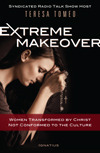 Extreme Makeover Women Transformed by Christ, Not Conformed to the Culture
Extreme Makeover Women Transformed by Christ, Not Conformed to the Culture
by Teresa Tomeo
Popular radio host Teresa Tomeo knows from experience that the self-image of American women is being distorted by pop culture. With its emphasis on youth, physical beauty, and sexuality, the secular media is encouraging women - and girls - to see themselves primarily as sex objects.
A former television news reporter, Tomeo pulls together the latest research on social behavior and trends to demonstrate that women are harming themselves and their chances for true happiness by adopting the thoroughly modern, sexually liberated lifestyle portrayed in magazines and movies. Packed with not only persuasive statistics but also powerful personal testimonies,Extreme Makeover shows that it is not the slogans of the sexual revolution and the women's liberation movement that free and dignify women, but the beautiful teachings of the Catholic Church.
So what are women steeped in the Hollywood and Cosmo girl version of reality to do? Undergo Tomeo's Extreme Makeover. With the help of this book, they can shed the toxic messages that objectify and enslave them and embrace the truth about being a beloved daughter of God.
"Writing with vivid energy and insight, Teresa Tomeo has created the best kind of book about faith: rich in content, engaging to read and thoroughly practical in its implications. Tomeo knows the pressures and dishonesties facing women in modern American culture from firsthand experience, and she leads women to Jesus Christ with compelling personal testimonies and uncommon persuasive skill. For any woman who seeks the true foundation of her dignity, this is the book to read - and to share."
+Charles J. Chaput, O.F.M. Cap., Archbishop of Denver
Teresa Tomeo is an author, syndicated Catholic talk show host, and motivational speaker with thirty years of broadcasting experience in both the secular and Christian media. Her daily morning program, Catholic Connection, is produced by Ave Maria Radio in Ann Arbor, Michigan and syndicated through the EWTN Global Catholic Radio Network. Among her other books is Noise: How Our Media-saturated Culture Dominates Lives and Dismantles Families.
July 10, 2011
A brief report from Ketchikan, Alaska
As I write this, I am sitting outside a coffee shop in Ketchikan, Alaska, staring directly at a beautiful, live bald eagle that is sitting twenty feet in front of me. Here's proof!

Our ship arrived here early this morning, along with four other cruise ships. Lots of "touristy" things to do and see, along with the usual stunning Alaska scenery. There are almost 200 people in the Catholic Answers group, and everyone is incredibly kind and patient (excepting myself, of course!). There were six talks yesterday, along with a panel discussion. I'm hoping to turn my talk, "Five False Christs", which I gave yesterday, into an article when time allows (ha!).
That's it for now! Back with more, when time and technology allows.
July 9, 2011
What are parables and why did Jesus use them?
A Scriptural Reflection on the Readings for July 10, 2011 | Carl E. Olson
Readings:
• Isa 55:10-11
• Psa 65:10, 11, 12-13, 14
• Rom 8:18-23
• Matt 13:1-23
The Gospel readings for today and the next two Sundays consist of parables of Jesus recorded in Matthew 13. What are parables and why did Jesus use them? Parables are sometimes thought of as short morality tales meant to teach readers about good and evil. There is some truth in this understanding, but there is much more to the parables uttered by Jesus.
The New Testament scholar Joachim Jeremias, in The Parables of Jesus (SCM Press, 1963), stated that "among the special characteristics of the parables of Jesus is the fact that step by step they reflect with peculiar clarity the character of his good news, the eschatological nature of his preaching, the intensity of his summons to repentance, and his conflict with Pharisaism" (p. 11). Put another way, the forty or so parables in Matthew, Mark, and Luke (there are none in the Fourth Gospel) proclaim the Gospel, announce the Kingdom, exhort sinners to repent, and declare war on the self-serving form of Judaism practiced by many of the Pharisees.
The Catechism states, "Through his parables [Jesus] invites people to the feast of the kingdom, but he also asks for a radical choice: to gain the kingdom, one must give everything. Words are not enough, deeds are required" (par 546). By using earthly images, often drawn from agricultural settings, Jesus conveys heavenly realities, but in a way that is indirect or cryptic, drawing listeners into the mystery without blinding them with the pure light contained within.
The seven parables in Matthew 13 are sometimes called the "Sermon of Parables," and the first of these is the parable of the seed and the sower. "He who sows the word of God then went out of his house," Saint Jerome wrote in his commentary on Matthew's Gospel, "that he might sow among the crowds." The words sowed by Jesus were not complex or abstract, but concrete and challenging.
The path is the world, into which we are born and in which we make the choices that set the course for our life after this world. Some of the seeds fall onto the path and are immediately snatched up, never penetrating the soul—that is, the mind and the heart. The evil one who snatches them away, Jesus explained, tirelessly seeks to destroy the souls of men by keeping from them the words of everlasting life. Why are some people seemingly incapable of even considering the Good News? There are many possible reasons, including the difficulty of evil, indifference, riches and power, or simply pride (cf., CCC, 29).
The rocky ground represents the soul characterized by superficiality. It initially responds with fervor, but cannot endure life's inevitable difficulties and trials. Our faith will be tested, but there are some who flee from the testing. They fail to embrace the words of Saint Paul, heard in today's epistle: "I consider that the sufferings of this present time are as nothing compared with the glory to be revealed for us." Without deep roots, a plant is easily torn from the soil.
What are the thorns that choke the word of God? Jesus specifically mentions anxiety and riches. When the pursuit of security and wealth becomes the focus of one's life, spiritual death follows. Even everyday concerns can slowly destroy the life of grace within us, pulling us farther and farther away from the source of true security and everlasting riches.
The fourth type of soil is rich, receptive to the seed. Hearing and understanding, the receptive listener enters into the divine life of God, bearing fruit to the degree he is able, by God's grace: "a hundred or sixty or thirtyfold." Each person's gifts, strengths, and situations are different; what is asked of us is death to self so that we may live completely in and for God.
This is the reality of baptism: death to sin and new birth in the Holy Spirit. It is the mystery of the Kingdom, established by Christ and explained in parables.
(This "Opening the Word" column originally appeared in the July 13, 2008, issue of Our Sunday Visitor newspaper.)
July 8, 2011
North to Alaska (the apologetics cruise is on!)
I'm posting this from downtown Seattle, but by the time most of you read this, I'll be on a huge ark boat cruise ship heading up the Canadian coast to Alaska on the 2011 Catholic Answers Apologetics Cruise. The kind folks at Catholic Answers asked me last fall to join Karl Keating and Co. for the excursion, and I immediately jumped at the opportunity, especially since I've been hoping to arm wrestle Tim Staples and see if he's really as strong as he looks (judging by his handshake, I'm toast). And, more importantly, it will be the first substantial "getaway" that my lovely wife and I have had in some time. The special bonus is that I get to try out a new talk on a bunch of captive listeners. Here's hoping I don't get thrown overboard! (I'm actually giving two talks: one on "five false Christs" and the other on dealing with anti-Catholic fiction.)
Needless to say, for the next week I won't be able to blog as often or as much as I normally do. But I will be checking in as I am able, and I do have some posts in the queue, including my (nearly regular) Sunday Scripture colum, which will be posted tomorrow.
With that, here is one of my favorite Johnny Horton tunes (no, seriously, I have long enjoyed many Johnny Horton songs, especially "Whispering Pines" and "Honky Tonk Man"):
July 9, 1900: Remembering China's Franciscan Saints

July 9, 1900: Remembering China's Franciscan Saints | Anthony E. Clark, Ph.D. | Ignatius Insight | July 8, 2011
Editor's note: Dr. Anthony E. Clark (personal website), Assistant Professor of Asian History at Whitworth University (Spokane, Washington), is the author of the recently published book, China's Saints: Catholic Martyrdom During the Qing (1644-1911) (Lehigh University Press, 2011), the first book-length study of China's Catholic martyr saints. In this essay he recounts the massacre and martyrdom of several Francisans in the Shanxi province on July 9, 1900.
July 9, 1900, near the end of the Qing dynasty:
After a long drought, a slight drizzle began to moisten the dry fields of Shanxi province. But it was too late. Local peasants had already spread rumors – the Christians were to blame for the long-term lack of rain. Banners had begun to appear throughout the region: "The skies won't rain, the earth is scorched, all because the churches have blocked the heavens" (Taiyuan jiaochu jianhua, 311).
Two Franciscan bishops, two priests, a brother, and seven nuns had prayed for rain, but when it had finally arrived they knew it could not stop the tide of violence. Chinese Christians all around them were already being captured, ordered to renounce their faith in God, and executed if they refused. By the summer of 1900 a group of anti-foreign and anti-Christian men and women had organized themselves into roaming bands of martial artists groups carrying long swords, spears, and halberds; they called themselves the Yihetuan, or the "Society of Righteous Harmony." Their duty, they asserted, was to support the ruling court and "annihilate all foreigners."
At 4 o'clock in the afternoon, the Franciscan bishops, priests, and nuns were reciting the Divine Office together with Chinese faithful in Taiyuan, the capital of Shanxi, when they heard the clamor of weapons approaching their small room. Instinctively knowing that they would soon be executed, those present all knelt before Bishop Gregorius Grassi, the ordinary of their remote Chinese diocese. Grassi trembled with emotion as he said to his fellow Christians, "The hour of death has come, my children: kneel down and I will give you holy absolution" (Franciscan Martyrs of the Boxer Rising, 14).
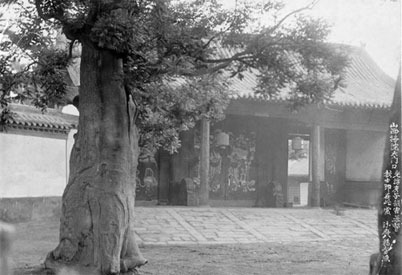
The location of the July 9th, 1900, martyrdom in Taiyuan.
Bishops Grassi and Francis Fogolla, Fathers Theodiric Balat and Elias Fachini, Brother Andreus Bauer, seven nuns, fourteen Chinese Catholics, and a group of Protestants who had also been arrested, were each stripped to the waist, men and women, and tied together.
Carl E. Olson's Blog
- Carl E. Olson's profile
- 20 followers




